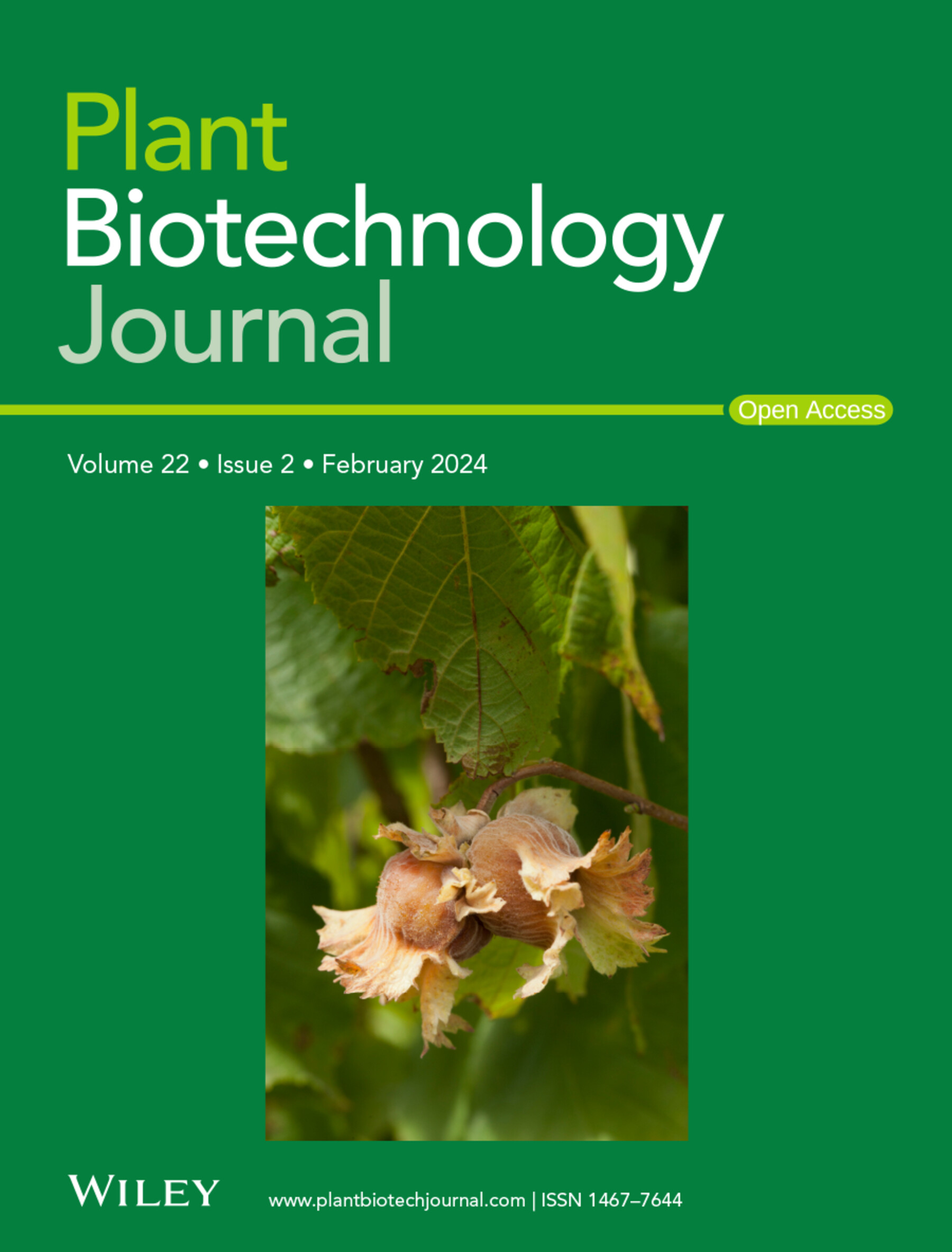A visual monitoring DNA-free multi-gene editing system excised via LoxP::FRT/FLP in poplar
IF 10.1
1区 生物学
Q1 BIOTECHNOLOGY & APPLIED MICROBIOLOGY
引用次数: 0
Abstract
The CRISPR-Cas9 system has emerged as a potent molecular scalpel for precise genome editing, and profoundly revolutionized plant genetics and breeding, facilitating the development of innovative and improved plant varieties. Typically, the CRISPR-Cas9 gene-editing construct is delivered into target organisms via Agrobacterium tumefaciens-mediated transformation or biolistic methods. However, the incorporation of the CRISPR-Cas9 machinery increases the risk of off-target effects, causing unintended genomic alterations. Additionally, the introduction of exogenous DNA sequences, such as antibiotic resistance marker, raises public concerns regarding the biosafety and regulatory oversight of genetically modified organisms (GMOs), potentially hindering regulatory approval and commercialization. Here, we have engineered an integrated system comprising RUBY, LoxP::FRT/FLP and CRISPR/Cas9-sgRNA cassettes within a single construct, allowing visible color monitoring throughout process including genetic transform, positive transgenic and edited events screening, as well as exogenous DNA excision events, we refer to it as ‘a visual monitoring DNA-free multi-gene editing system (VMDFGE)’. This system was introduced into poplar through Agrobacterium tumefaciens-mediated transformation, yielding transgenic poplars with a 75.0% visual screening rate, a 45.8% targeted mutation rate and a 54.5% excision rate for the entire integration system. This approach eliminates the concerns associated with off-target effects and GMO regulatory challenges. It offers significant potential for improvement of poplar, other woody plants and crop species while removing the foreign DNA.利用LoxP::FRT/FLP切割杨树无dna多基因编辑系统
CRISPR-Cas9系统已成为精确基因组编辑的有力分子手术刀,深刻改变了植物遗传育种,促进了创新和改良植物品种的发展。通常,CRISPR-Cas9基因编辑构建物通过农杆菌介导的转化或生物学方法传递到目标生物中。然而,CRISPR-Cas9机制的结合增加了脱靶效应的风险,导致意想不到的基因组改变。此外,外源DNA序列的引入,如抗生素耐药性标记,引起了公众对转基因生物(GMOs)生物安全和监管监督的关注,可能阻碍监管批准和商业化。在这里,我们设计了一个集成系统,包括RUBY, LoxP::FRT/FLP和CRISPR/Cas9-sgRNA卡带在一个单一的构建中,允许在整个过程中进行可见的颜色监测,包括遗传转化,阳性转基因和编辑事件筛选,以及外源DNA切除事件,我们称之为“视觉监测无DNA多基因编辑系统(VMDFGE)”。该系统通过农杆菌介导的转化导入杨树,获得的转基因杨树的视觉筛选率为75.0%,靶向突变率为45.8%,整个整合系统的切除率为54.5%。这种方法消除了与脱靶效应和转基因生物监管挑战相关的担忧。它在去除外源DNA的同时,为杨树、其他木本植物和作物品种的改良提供了巨大的潜力。
本文章由计算机程序翻译,如有差异,请以英文原文为准。
求助全文
约1分钟内获得全文
求助全文
来源期刊

Plant Biotechnology Journal
生物-生物工程与应用微生物
CiteScore
20.50
自引率
2.90%
发文量
201
审稿时长
1 months
期刊介绍:
Plant Biotechnology Journal aspires to publish original research and insightful reviews of high impact, authored by prominent researchers in applied plant science. The journal places a special emphasis on molecular plant sciences and their practical applications through plant biotechnology. Our goal is to establish a platform for showcasing significant advances in the field, encompassing curiosity-driven studies with potential applications, strategic research in plant biotechnology, scientific analysis of crucial issues for the beneficial utilization of plant sciences, and assessments of the performance of plant biotechnology products in practical applications.
 求助内容:
求助内容: 应助结果提醒方式:
应助结果提醒方式:


